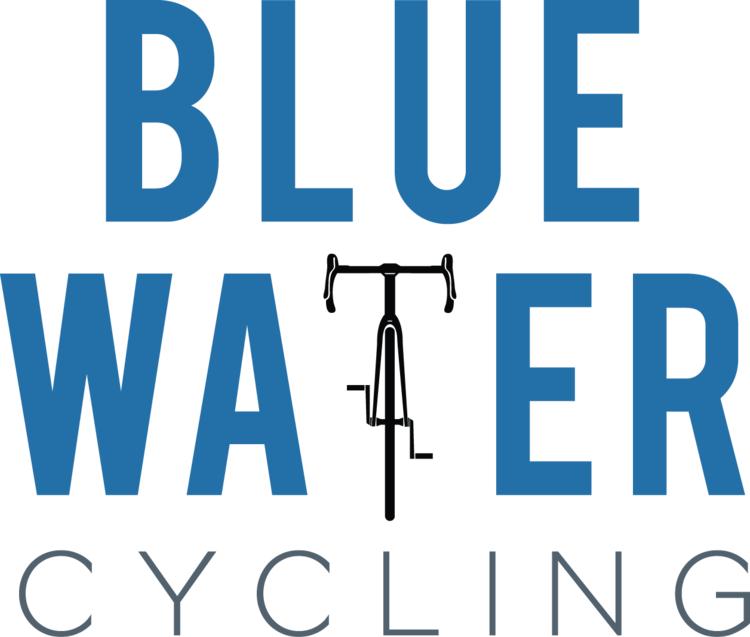This series is a collection of cycling routes which I have personally ridden and thoroughly enjoyed. My aim is to provide insight and inspiration for you to get out and enjoy a ride along these routes or to create your own perfect ride. As always, I am open to new ideas and suggestions. If you have a ride you'd like me to check out and include in this series, feel free to send an email - contact@bluewaterbicycles.com
There really is nothing comparable to riding south along the Pacific coast of California on a bicycle. The views of the vast Pacific are world class. Heading southbound takes advantage of a usually favorable tailwind allowing for an even more enjoyable ride. There are plenty of rolling hills and in southern California nothing is too steep or daunting as long as you stay near the coast. Of course, there are many mountains to tackle if you desire, but those are a topic for another Blue Water Rides post.
Shown above is the featured route from Long Beach to Solana Beach. Long Beach is an excellent starting point with metro lines dropping off in Downtown Long Beach. Although, anywhere in or near LA could be a reasonable starting point depending on your time allowance and desired mileage. When daylight is short during the winter, it seems convenient to embark from a point already along the coast and cruise from there. Amtrak stations are intermittently positioned nearby along the route, so it is highly modifiable with convenient and comfortable trains back to Los Angeles throughout the day. Be sure to do a little research prior to setting out on the journey to familiarize yourself with the location of the stations. Additionally, space for bicycles is limited on most of the trains along the route. The allotment for bikes is listed on the Amtrak website, and you reserve space for your bike when booking the ticket. Delightfully, bikes are free of charge on these Amtrak routes. Comfort and customer service has proved to be excellent, so Amtrak is recommended even though there are other trains running along certain portions of the coast.
Once you’ve begun the ride southbound, it is fairly straightforward to remain on course. There are clearly posted signs stating “Pacific Coast Route” for cyclists. Even if you find yourself exploring routes and straying away from the signage, fear not. As long as the Pacific Ocean is on the right-hand side, you’re still on track. A large portion of the route is directly on Pacific Coast Highway. This is generally a great thing, however, a bit of extra caution is advised as this particular stretch of the PCH can see a lot more traffic than other portions of the coast such as northern California. This doesn’t detract from the spectacular ride in the least as you breathe in the crisp salt air and frequently glance over at the never ending blue water while descending the smooth rolling hills.
The only other area along the highlighted course which may raise some questions is navigating the portion near Camp Pendleton Marine Base. As recently as October 2018, cyclists could register online a few days prior to approaching either gate (North or South) and likely be granted access to ride through the base. This allows cyclists to avoid riding along Interstate 5 for a stretch of 7-8 miles. However, due to a recent change in security measures, cyclists are now required to register in person at the South (Main) gate during business hours prior to being granted access to ride from either gate. In the past, I had ridden through from the North and South gates without any problems. Due to the recent change, I was turned away from the gate and not allowed to ride on the base this time. Some may be wary of riding on the interstate and normally, I would be too! Luckily, this time the traffic was such that it was moving more slowly than my fellow cyclist and I. This made for a calm effort directly along the smooth and clean shoulder toward the exit for the town of Oceanside.
After arriving at Oceanside, the remainder of the ride is the icing on the cake. It is only about 28 miles from that point to reach the neighborhood of La Jolla on the north side of San Diego. There is only one significant hill prior to that point while approaching the famous golf course, Torrey Pines. If daylight is running short in the winter time like it was for us most recently, the town of Solana Beach has a few restaurants and an Amtrak station easily accessible for the journey back north. Alternatively, if you’re feeling nimble and have plenty of sunshine remaining, continue down to San Diego where there are two more Amtrak stations available to board the northbound Surfliner. Whatever you choose, enjoy the ride!


